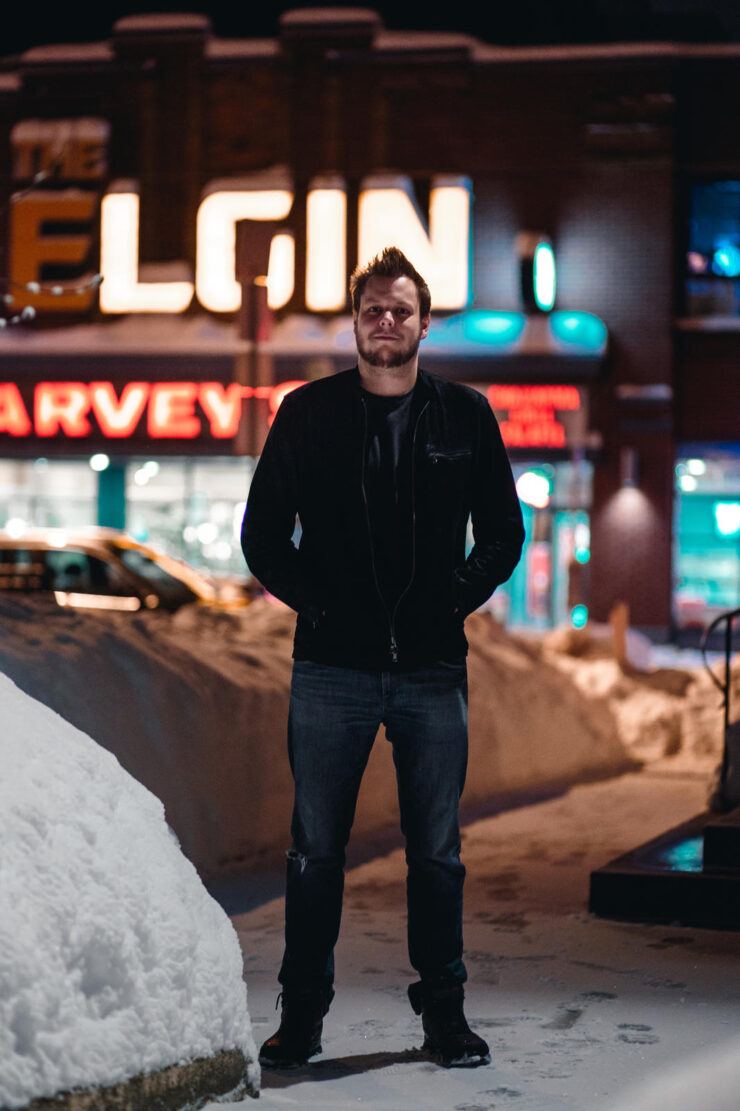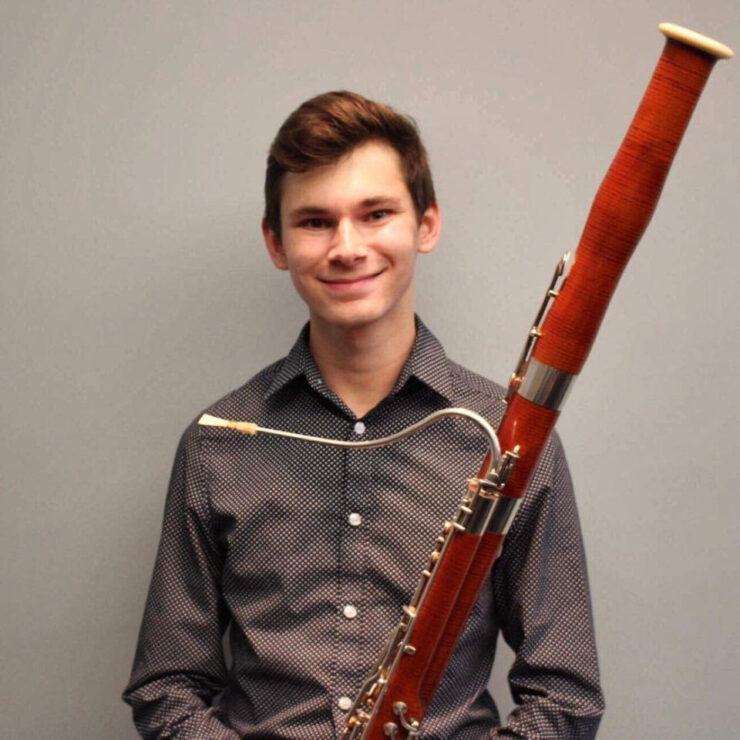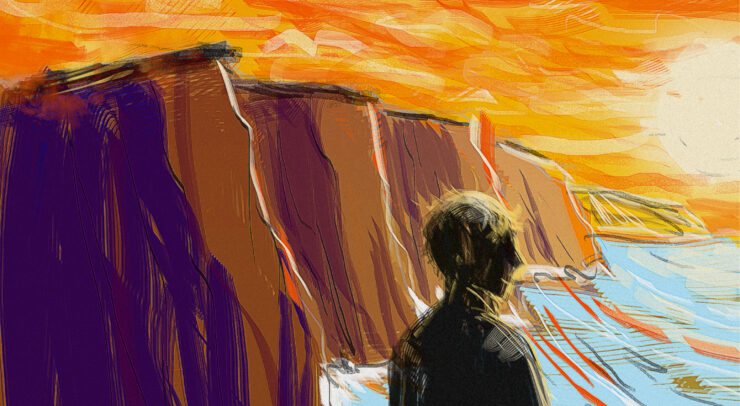Carleton grads explore the artistic possibilities of the virtual world
Nadia Helal | Fulcrum Contributor
Photo submitted by Anthony Scavarelli
THE LUMINARTISTS ARE a pair of trained programmers, designers, and multimedia artists who use technology and the arts to inspire conversation about how technology can be used to engage many people in a public space. The project’s founders, Anthony Scavarelli and Henri Kuschkowitz, both graduated from the interactive multimedia and design (IMD) program at Carleton University in 2011, which is where they met and decided to start a business.
Scavarelli is currently studying crowd-computer interaction with the new human-computer interaction (HCI) masters program at Carleton University to further his expertise. Kuschkowitz has previously studied in Europe and brought his insights of different cultures and social norms to the Luminartists.
The pair spoke to the Fulcrum about their innovative art form and how students can follow their passions to create something new of their own.
The Fulcrum: What are the Luminartists all about?
Scavarelli: We commonly address a particular social or environmental issue. Using our skills, we bring to life interactive installations—such as projections on buildings or sidewalks—that can be interacted with through various traditional and modern mediums such as drawing, dancing, or singing, as well as Twitter or other social media engines, text messaging, etc.
With the unlimited possibilities of the virtual world, we aim to change perceptions about the real one, how to perceive one’s surroundings, and how we communicated and behave with one another.
According to your website, you specialize in the creation of innovative interactive spaces. What exactly does that mean?
Kuschkowitz: We believe that we have reached a point in our time where technology—whether cell phones, computers, or other electronics—have become part of our everyday life and have made us connected in ways never before possible. Yet with all these possibilities, we have simultaneously disconnected ourselves from the activities around us. We find ourselves broadcasting the events that unfold around us, but in doing so, isolating ourselves from participating in these events. Think of connected disconnectedness.
As artists, we try to rebuild the bond between art and reality by disrupting the classical approach of artistic creation and passive observation. To achieve this, we design the environment in which the observer becomes part of the creative process. We provide the bounds of the artistic environment and visitors become the active agents, creating and bringing the artwork to life.
Can you describe your latest installation at Nuit Blanche?
Scavarelli: Ottawa’s first Nuit Blanche was themed around the meaning of, “La vie est belle; life is beautiful,” and we decided to create a piece dedicated to reliving the emotion one experiences while “singin’ in the rain.” In particular, we envisioned recreating the environment of a hot summer day where it suddenly starts to rain—the sun shining, yet water pouring out of nowhere. This rare moment, combining two opposite elements, creates such a unique and beautiful ambience that we felt truly represents one of life’s many beauties.
To achieve this, we created a multi-touch floor that we then projected an abstract puddle of water onto in front of the Ottawa School of Art, who graciously donated space to us. When people would step on the puddles it would play consecutive notes from the song “Singin’ in the Rain”—the name our project ultimately took—and it would create visible feedback within the puddle. This setup allowed for an endless amount of possibilities in creating a unique rhythm with friends and/or strangers to explore together.
It was a really busy night and we had hundreds upon hundreds of people stopping by and returning to have some more fun with us and to discuss our abstract installation. With the amount of laughter and dancing we saw throughout the night, we think that we were able to capture the spirit of this year’s Nuit Blanche, and we’re looking forward to the next one.
Do you enjoy what you do?
Scavarelli: Most definitely. We wouldn’t be doing it otherwise. We are looking to blend our desire and passion to be creative, while also including our diverse skill set. This kind of work is still fairly new in Canada, but we think it will get larger as it becomes more visible.
Are your projects all based in Ottawa?
Scavarelli: So far this is the case, but we are definitely looking to branch out wherever the work is required—though we think there is definitely a great deal of interest here in Ottawa that we are pursuing. Ottawa is a great town; just look at how successful Nuit Blanche was. We don’t think too many people expected that.
What’s your next exciting project?
Kuschkowitz: It’s a big one, but we cannot share any details with you yet. However, it is going to be incredibly exciting and will go beyond anything we have done so far. Hopefully we can share more information soon, and when we will, you will be able to find out about it through our social outlets.
Can students at the University of Ottawa get involved?
Scavarelli: I think this is something we are definitely interested in for the future, as there is some great talent here. It is just a matter of us growing enough to be able to accommodate more employees. We have high hopes that this will be the case within the next couple of years, though. In the meantime, we sometimes hold workshops at Artengine about various interactive media topics that anyone can attend, and we are definitely always open to hearing from anyone that is also interested in this kind of work. It’s always nice to share experiences, and see how others approach similar problems.
What advice can you give to students in that field?
Scavarelli: Never give up on your passions and never stop learning. Technology moves so fast that it’s easy to fall behind new possibilities. But more than that, do not let the technology guide the art. Computers and code are merely tools used to create an exciting experience. Dream first; create later.





